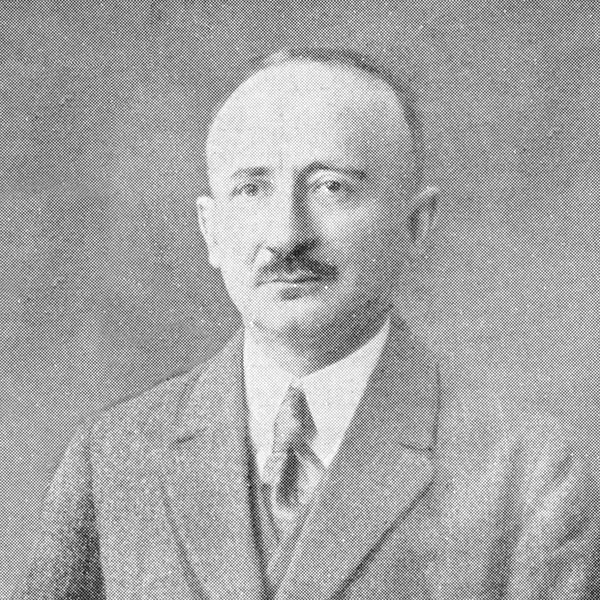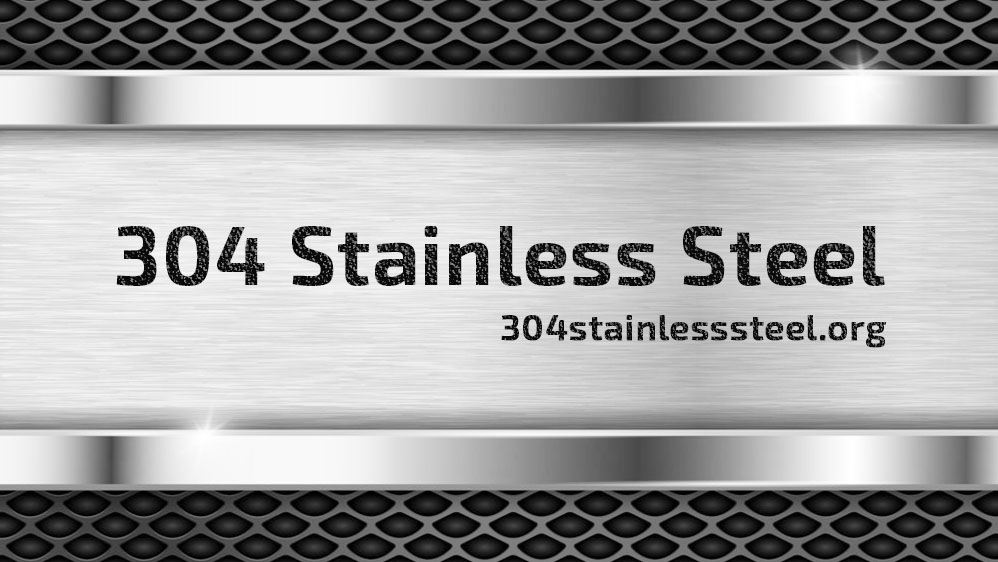AISI 304 Stainless Steel (UNS S30400) Wiki
AISI 304 stainless steel (UNS S30400) is the most widely used austenitic chromium-nickel stainless steel. Its nominal composition is 18% chromium and 8% nickel, so it is also called 18/8 stainless steel. It is essentially non-magnetic when annealed and may become slightly magnetic when cold-worked. The alloy has excellent fabricability and weldability. It can be hardened by cold work, but cannot be hardened by heat treatment.
AISI 304 grade stainless steel has a wide range of applications. It resists rust in construction applications. Except for high temperature conditions involving high acid and chloride content, it is resistant to food processing environments, as well as organic chemicals, dyes, and a variety of inorganic chemicals.
The History of 304 Stainless Steel

In 1912, Eduard Maurer, a metallurgist in the research laboratory of Friedrich A. Krupp works in Germany, was searching for materials suitable for pyrometer tubes and found that Benno Strauss made some iron-chromium alloys with a nickel content of about 8%, after being exposed to acidic fumes in the laboratory for several months, they will not be attacked.
They applied for two patents in the same year:
- Chromium 7.0-25%, Carbon 1.0% max, Nickel 0.5-20% (a martensitic chromium alloy)
- Chromium 15-40%, Carbon 1.0% max, Nickel 4-20% (An austenitic chromium-nickel alloy)
In 1924, the American Society for Testing and Materials (ASTM) held a stainless steel symposium in New Jersey. Strauss attended the meeting and published a paper discussing his two alloys: V1M and V2A. The composition is as follows:
| Chemical Composition | V2A (austenitic), % | V1M (martensitic), % |
| Carbon | 0.25 | 0.22 |
| Silicon | 0.08 | 0.07 |
| Manganese | 0.11 | 0.12 |
| Nickel | 7.00 | 1.75 |
| Chromium | 20.10 | 10.05 |
The alloy V2A developed by Krupp engineers Benno Strauss and Eduard Maurer is very close to today’s 18-8 (type 304 stainless steel), it is recommended for its excellent corrosion resistance, especially in nitric acid. Subsequently, this alloy was introduced by the United States, and it was not until 1927 that the United States produced this alloy for the first time.
In 1932, AISI published 46 three-digit numbers and their corresponding chemical components, of which 18-8 were named 304. Now this simple and easy-to-remember number is well known all over the world.
In 1970, UNS, jointly sponsored by ASTM and SAE, numbered metals and alloys with the first letter and five digits. For stainless steel, the system consists of the letter “S” followed by five numbers. “S” stands for stainless steels, valve steels and superalloys. Type 304 stainless steel is given the UNS designation S30400.
Chemical Composition of AISI 304 Stainless Steel
Type 304 stainless steel chemical composition is listed in the following table.
| AISI 304 Stainless Steel Composition, % | |||||||||
| Standard | AISI (UNS) | C, ≤ | Si, ≤ | Mn, ≤ | P, ≤ | S, ≤ | Cr | Ni | N, ≤ |
| ASTM A240/A240M | 304 (S30400) | 0.07 | 0.75 | 2.00 | 0.045 | 0.03 | 17.5-19.5 | 8.0-10.5 | 0.1 |
| ASTM A276/A276M | 0.08 | 1.00 | 2.00 | 0.045 | 0.03 | 18.0-20.0 | 8.0-11.0 | – | |
| ASTM 666; SAE J405 |
0.08 | 0.75 | 2.00 | 0.045 | 0.03 | 18.0-20.0 | 8.0-10.5 | 0.1 | |
| ASTM A313/A313M | 0.08 | 1.00 | 2.00 | 0.045 | 0.03 | 18.0-20.0 | 8.0-10.5 | 0.1 | |
| ASTM A479/A479M | 0.08 | 1.00 | 2.00 | 0.045 | 0.03 | 18.0-20.0 | 8.0-10.5 | – | |
| ASTM A314; ASTM A580/A580M |
0.08 | 1.00 | 2.00 | 0.045 | 0.03 | 18.0-20.0 | 8.0-10.5 | 0.1 | |
| ASTM A473 | 0.08 | 1.00 | 2.00 | 0.045 | 0.03 | 18.0-20.0 | 8.0-11.0 | 0.1 | |
| ASTM A959 | 0.07 | 1.00 | 2.00 | 0.045 | 0.03 | 17.5-19.5 | 8.0-11.0 | – | |
Notes:
- ASTM A240/A240M: Stainless Steel Plate, Sheet, and Strip for Pressure Vessels and for General Applications
- ASTM A276/A276M: Stainless Steel Bars and Shapes
- ASTM A313/A313M: Stainless Steel Spring Wire
- ASTM A314: Stainless Steel Billets and Bars for Forging
- ASTM A473: Stainless Steel Forgings
- ASTM A479/A479M: Stainless Steel Bars and Shapes for Use in Boilers and Other Pressure Vessels
- ASTM A580/A580M: Stainless Steel Wire
- ASTM 666: Annealed or Cold-Worked Austenitic Stainless Steel Sheet, Strip, Plate, and Flat Bar
- ASTM A959: Standard Guide for Specifying Harmonized Standard Grade Compositions for Wrought Stainless Steels
- SAE J405: Chemical Composition of SAE Wrought Stainless Steels
Physical Properties
The physical properties of AISI 304 stainless steel are listed in the table below such as density, melting point, specific heat, electrical resistivity, elastic modulus (modulus of elasticity), thermal conductivity, and coefficient of thermal expansion (CTE).
Notes:
- 1 g/cm3 = 1 kg/dm3 = 1000 kg/m3
- 1 Ω·mm²/m = 1 μΩ·m
- 1 GPa = 1 kN/mm2
- 1 MPa = 1 N/mm2
| 304 Physical Properties | Metric | Imperial |
| Density | 7.93 g/cm3 | 0.286 lb/in3 |
| Melting point | 1400-1450 °C | 2550-2650 °F |
| Specific heat capacity | 500 J/kg·K at 20 °C | 0.12 Btu/lb ·°F at 68 °F |
| Electrical resistivity | 0.72 μΩ·m at 20 °C | 28.35 μΩ·in. at 68 °F |
| Conductivity, %, IACS | 2.5 | – |
| Magnetic permeability | 1.02 (Approximate) | – |
| Elastic modulus (Modulus of Elasticity) | 193 GPa | 28 x 106 psi |
| Thermal diffusivity | 3.84 mm2/s | 0.006 in2/s |
| Thermal conductivity | 16.2 W/m·K at 100 °C | 9.4 Btu/ft·h·°F at 212 °F |
| 21.5 W/m·K at 500 °C | 12.4 Btu/ft·h·°F at 932 °F | |
| Coefficient of thermal expansion (CTE) | 17.2 10-6/K at 0-100 °C | 9.6 μin./in.·°F at 32-212 °F |
| 17.8 10-6/K at 0-315 °C | 9.9 μin./in.·°F at 32-600 °F | |
| 18.4 10-6/K at 0-538 °C | 10.2 μin./in.·°F at 32-1000 °F |
AISI 304 Stainless Steel Equivalent
AISI 304 stainless steel equivalent materials are listed in the table below, including European EN (Germany DIN, British BSI, French NF…), ISO, Japanese JIS and Chinese GB standard (For reference).
| AISI 304 stainless steel equivalent materials | |||||||||||||||
| US | European Union | Germany | Britain (UK) | ISO | Japan | China | |||||||||
| Standard | Grade (UNS) | Standard | Steel Name (Steel Number) | Standard | Grade (Steel Number) | Standard | Grade (Steel Number) | Standard | Grade | Standard | Grade | Standard | Grade | ||
| AISI, SAE, ASTM |
304 (UNS S30400) |
EN 10088-2; EN 10088-3 |
X5CrNi18-10 (1.4301) | DIN EN 10088-2; DIN 17440 |
X5CrNi18-10 (1.4301) | BS EN 10088-2; BS970 :1996 |
X5CrNi18-10 (1.4301); 304S15, 304S31 |
ISO 15510 | X5CrNi18-10 | JIS G4304 | SUS304 | GB/T 1220; GB/T 3280 |
06Cr19Ni10; 0Cr18Ni9 (Old designation) |
||
